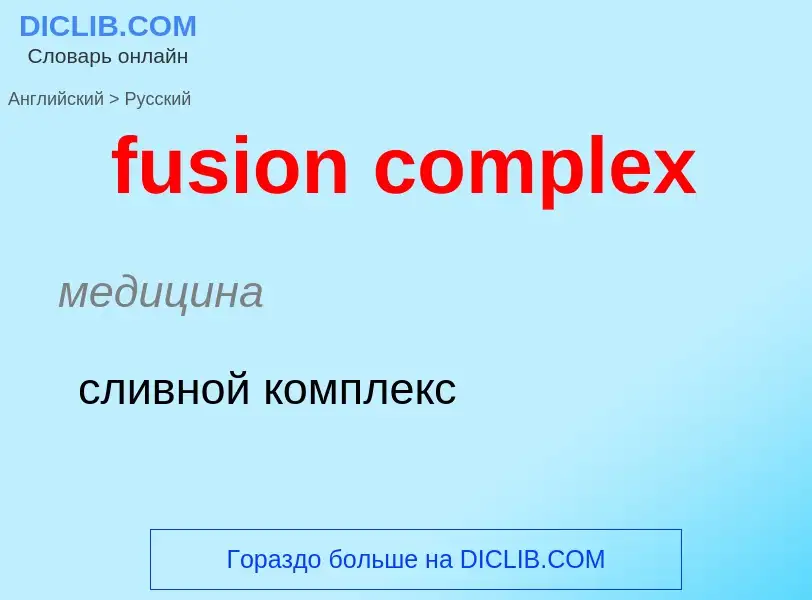Tradução e análise de palavras por inteligência artificial ChatGPT
Nesta página você pode obter uma análise detalhada de uma palavra ou frase, produzida usando a melhor tecnologia de inteligência artificial até o momento:
- como a palavra é usada
- frequência de uso
- é usado com mais frequência na fala oral ou escrita
- opções de tradução de palavras
- exemplos de uso (várias frases com tradução)
- etimologia
fusion complex - tradução para russo
медицина
сливной комплекс
['fju:ʒ(ə)n]
общая лексика
слияние
вплавление
конденсация
непровар
плавильный
плавка
провар
размягчение
сплав
сплавление
таяние
термитный
физика
синтез
медицина
анкилоз
артродез
фузия
строительное дело
плавление
нефтегазовая промышленность
оплавление
существительное
общая лексика
плавка
расплавление
сплавление
расплавленная масса
расплав
слияние
коалиция
расплавленная масса, сплав
слияние, объединение
физика
термоядерный сплав
психология
смешанные побуждения или чувства
музыка
фьюжн
джаз-рок (сплав джаза и рока)
Definição
Wikipédia
Ventricular tachycardia (V-tach or VT) is a fast heart rate arising from the lower chambers of the heart. Although a few seconds of VT may not result in permanent problems, longer periods are dangerous; and multiple episodes over a short period of time are referred to as an electrical storm. Short periods may occur without symptoms, or present with lightheadedness, palpitations, or chest pain. Ventricular tachycardia may result in ventricular fibrillation (VF) and turn into cardiac arrest. This conversion of the VT into VF is called the degeneration of the VT. It is found initially in about 7% of people in cardiac arrest.
Ventricular tachycardia can occur due to coronary heart disease, aortic stenosis, cardiomyopathy, electrolyte problems, or a heart attack. Diagnosis is by an electrocardiogram (ECG) showing a rate of greater than 120 beats per minute and at least three wide QRS complexes in a row. It is classified as non-sustained versus sustained based on whether it lasts less than or more than 30 seconds. The term ventricular arrhythmia refers to the group of abnormal cardiac rhythms originating from the ventricle, which includes ventricular tachycardia, ventricular fibrillation, and torsades de pointes.
In those who have normal blood pressure and strong pulse, the antiarrhythmic medication procainamide may be used. Otherwise, immediate cardioversion is recommended, preferably with a biphasic DC shock of 200 joules. In those in cardiac arrest due to ventricular tachycardia, cardiopulmonary resuscitation (CPR) and defibrillation is recommended. Biphasic defibrillation may be better than monophasic. While waiting for a defibrillator, a precordial thump may be attempted (However reserved to those who have the prior experience of doing so) in those on a heart monitor who are seen going into an unstable ventricular tachycardia. In those with cardiac arrest due to ventricular tachycardia, survival is about 45%. An implantable cardiac defibrillator or medications such as calcium channel blockers or amiodarone may be used to prevent recurrence.

![sinus]] top, ventricular tachycardia bottom sinus]] top, ventricular tachycardia bottom](https://commons.wikimedia.org/wiki/Special:FilePath/Ventricular Tachycardia.png?width=200)
